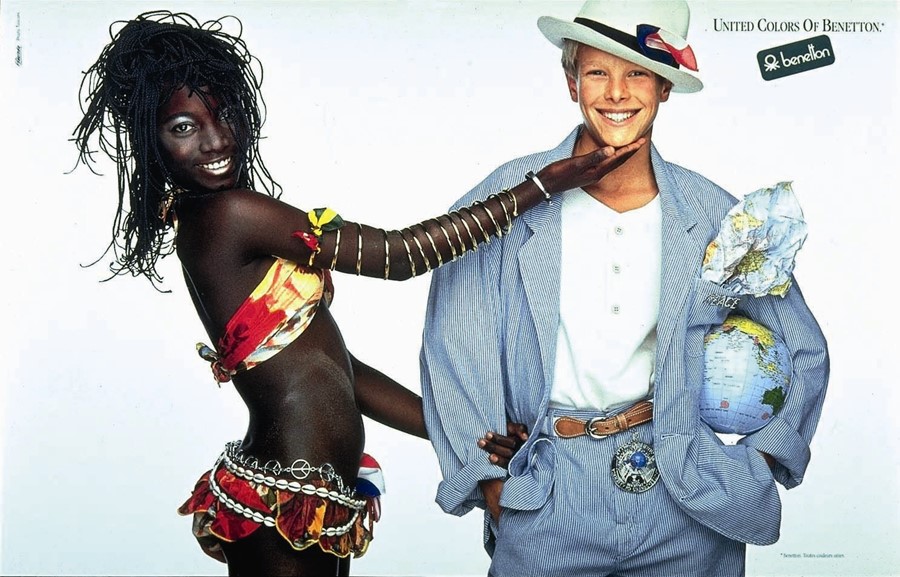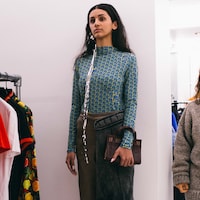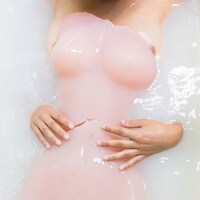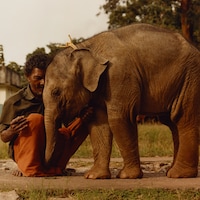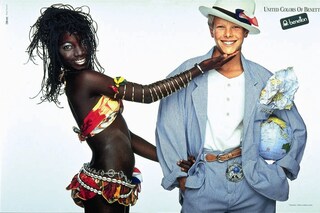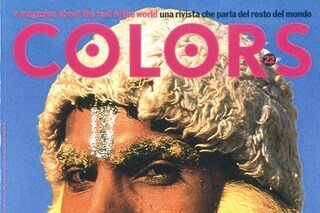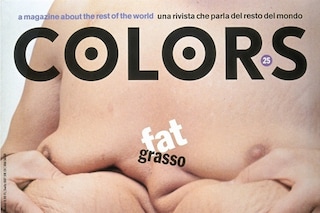Benetton’s former master of controversy on his never-ending show
“I was born under the British bombs in 1942. My mother moved us out of Milan, up to the mountains, because our house was bombed when I was six months old. We lived in a peasant house having an incredible time, feeding ducks and chickens and cows and horses. After the war we had electricity coming into the village and I remember the first electric bulb switching on. (laughs) It sounds like I’m a primitive man! I moved back to Milan and of course I had an accent as a mountain boy, so everyone made fun of me in school. I had to put shoes on and get dressed to go to school. I didn’t like it.
My father was a photographer for Corriere della Sera. When I was six, I had my first little camera and would take the photos to my father’s office. I could develop myself before the age of ten. I saw a lot of news as a child – I would run to see my father, and say, ‘Can I come with you?’ He took pictures of politicians, Hemingway, Toscanini, La Scala, beauty contests, things like that.
I went to art school in Switzerland to study photography and graphic design. I had great teachers coming straight from Bauhaus. I used to go to London a lot, taking photos of rock’n’roll concerts. When I finished I started to take reportage pictures – one of my first stories was in ’65 of a girl wearing a miniskirt. Annabelle saw it and asked me to take fashion pictures for the magazine. That’s how I started my fashion career – after that Harper’s Bazaar in America saw my photos and that was it. At 25 I was rich, almost. (laughs) It was like Blow-Up. I was working for the major magazines in the world already, French Elle, Italian and British Vogue, GQ and everyone else. That was in the early 70s. I created the concept for Jesus Jeans and worked on Ferucci and Esprit, then Benetton in the 80s. I started at Benetton in 1981 and I said, ‘Listen Luciano Benetton, I don’t want an advertising agency, I don’t want marketing studies. I will do my work and you will say ‘yes’ or ‘no’. If you want to do something new, you can’t follow the rules.’ And he accepted that.
Many years ago somebody told me, ‘Don’t take my picture because you’ll steal my soul.’ That touched me because if you look at some portraits, you can see the soul
For World Aids day in 1993 I had a huge condom made and put it on the Obelisk in the Place de la Concorde in Paris. Ronald Reagan said Aids was just for homosexuals, I thought that was stupid. All the young people were interested in Aids, so I said, ‘let’s go find out what Aids is.’ I did an issue of Colors magazine about Aids that was very well received. The American medical association said it was the best document about Aids ever made.
I’m the worst advertising photographer in the world. Other photographers are looking for consensus, but I don’t care. I do what I think I should. It’s fantastic, I’ve got a voice inside that tells me all the time. To be creative you have to be deeply insecure. Of what are we secure of? To die one day is the only thing, everything else is optional. (laughs) So I work in the option! I am not a creative person, but I’m a situationist.
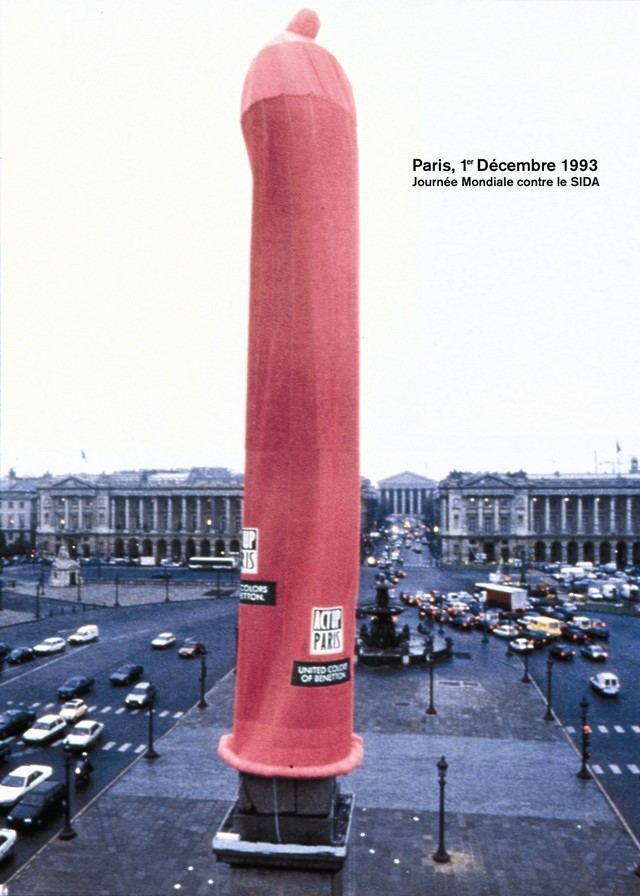
In 1993 I received a letter from a student of the University of Sarajevo saying, ‘Mr Toscani, you should do something, because here there is a war and no one is talking about it.’ I thought, how can I show a war that we don’t want to see? So I said, ‘I’m going to do an image of a dead soldier without a body.’ I asked the Croatian Red Cross to get a military suit of a soldier, and that’s what that photo is of. I became a hero for those university students. There had been so much censorship with my pictures that I said, ‘I’m going to do a picture that no one can complain about.’ So I went to the hospital and I took photos of a newborn baby and made a campaign. I wasn’t ready to handle it when that came out – there were people stopping in the street, swearing and screaming, especially in England. You know the British would like to see a newborn puppy on the wall but they don’t like children.
It took me three years to get permission to go into death row to make the photographs for the Sentenced to Death campaign. Then the day the picture was published, it had been agreed between me and Benetton that I would leave. I needed them to publish the campaign. It was one of my best works. In Europe we don’t have capital punishment, it’s such a primitive way to make justice. It’s always intrigued me.
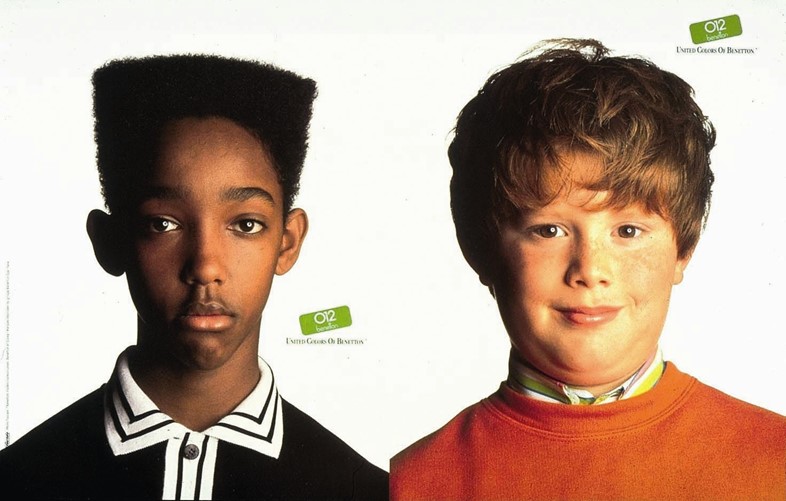
I don’t get angry. I understand that there are people who do not want to move from their point of view. When you start to discuss a problem society doesn’t want to deal with it. I do my photography. They’re not obliged to look at it.
Every time you do something new it’s controversial, right? Look, I’m just a photographer, I want to witness my time. I’m not a fashion photographer, I’m not an advertising photographer, I’m not a still-life photographer. I photograph anything that interests me in the way I think is interesting; that’s my philosophy. I’m not interested in the aesthetic and beautiful. I think photography is the memory of humankind. After Benetton, I photographed a village in Italy destroyed by the Nazis during World War II. Five hundred and sixty people killed and there was no document of it. I talked to the people that were still alive at the time. They were children, three, five, six years old; now they’re like, 80 or 90.
I’m the worst advertising photographer in the world. Other photographers are looking for consensus, but I don’t care
In doing fashion photography I realised these girls looked terrible, they started to get really sick. So I made a little movie about an anorexic girl and there was the opportunity for this brand to do a campaign. Then there was a big controversy about the fashion world and why the girls were so skinny.
Everything’s my personal work. Even the most commercial is personal work. Where there is fashion, there are politics, problems, ironies – there is everything that is going on. Every photo is socially political. I mean, a miniskirt is a sociopolitical statement.
What I do now is called The Human Race. I go around the world, I take my pictures and I talk to the people. I’ve got up to 50,000 portraits now. I just went to Guatemala – the United Nations asked me to make this work there because there’s an intolerance problem between minority tribes. I go to Libya, Tokyo. I just shoot incredible faces. Many years ago somebody told me, ‘Don’t take my picture because you’ll steal my soul.’ That touched me because if you look at some portraits, you can see the soul. That’s what I’m looking for. I don’t care what they do. I look for people in moments where they are particularly alive.
I call it a never-ending show. People ask me, ‘Will you do an exhibition?’ I don’t care about that. I like pictures to be published. I like magazines, newspapers. I’ve got six children with three different women, I have 11 grandchildren. I’ve been lucky. I live on a farm in Tuscany where my studio is. In front of me is the Mediterranean. I do my own olive oil, I do my own wine. I breed horses. I manage to do it all. I’ve always got time. Every day, I’m always working.”
